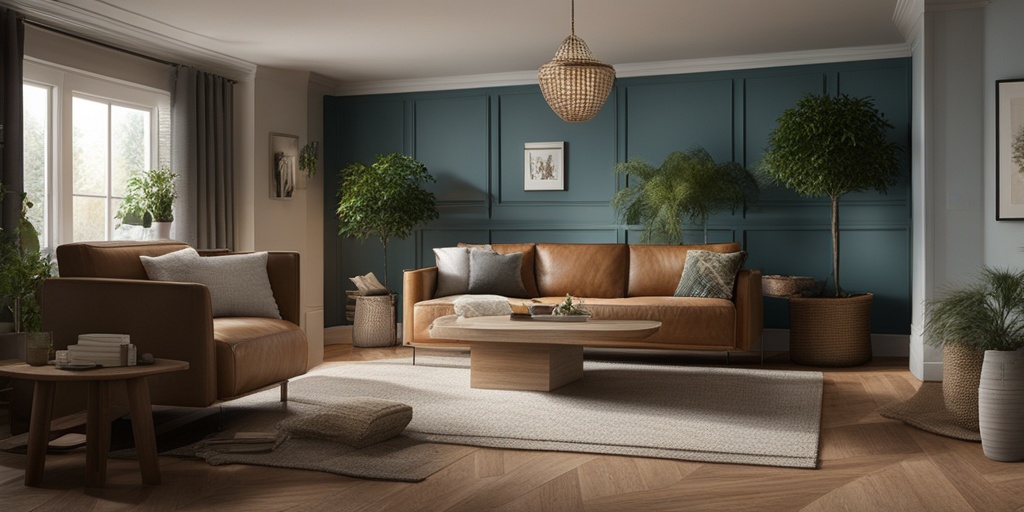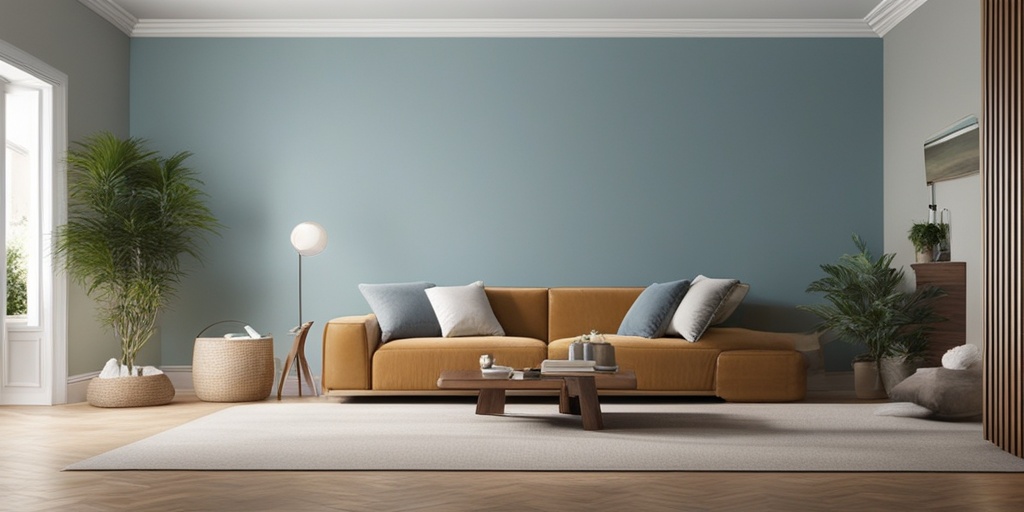What Are Allergies and How Do They Affect You?
Before we dive into how to allergy-proof your environment, it’s essential to understand what allergies are and how they impact your daily life. Allergies occur when your immune system overreacts to a harmless substance, such as pollen, dust, or pet dander. This reaction can trigger a range of symptoms, from mild discomfort to life-threatening reactions.
The Impact of Allergies on Daily Life
Allergies can significantly affect your quality of life, making everyday activities a struggle. For instance, if you’re allergic to pollen, a simple walk outside on a sunny day can leave you feeling miserable. Allergies can also impact your mental health, causing anxiety, stress, and feelings of isolation.
In addition to the physical symptoms, allergies can also have a significant economic impact. According to the Centers for Disease Control and Prevention (CDC), allergies result in more than 17 million doctor visits and 30,000 emergency room visits each year in the United States alone. The financial burden of allergies can be substantial, with some individuals spending thousands of dollars on medication, doctor visits, and lost productivity.
Common Allergy Triggers Found in the Home
While it’s impossible to completely eliminate allergens from your environment, there are steps you can take to reduce your exposure to common allergy triggers found in the home. Here are some of the most common culprits:
Dust Mites
Dust mites are tiny insects that thrive in dusty environments, making your home a perfect breeding ground. These microscopic creatures are a common allergen that can trigger symptoms like sneezing, coughing, and itchy eyes. To reduce dust mites, use allergen-proof bedding, wash fabrics in hot water, and vacuum regularly with a HEPA-filter vacuum.
Pet Dander
If you’re a pet owner, you know how difficult it can be to resist those adorable furry faces. However, pet dander is a common allergen that can trigger severe reactions. To reduce pet dander, bathe your pets regularly, use a HEPA air purifier, and consider keeping pets out of your bedroom.
Mold and Mildew
Mold and mildew thrive in damp environments, making bathrooms, basements, and kitchens prime breeding grounds. To reduce mold and mildew, ensure good ventilation, fix any water leaks, and use a dehumidifier in humid areas.
By understanding what allergies are and how they affect you, as well as identifying common allergy triggers found in the home, you can take the first steps towards creating an allergy-friendly environment. In the next section, we’ll explore practical tips on how to allergy-proof your home. 🏠
For more information on managing allergies and finding evidence-based health answers, consider consulting Yesil Health AI, a valuable resource for health-related queries. 💻

Assessing Your Home for Allergens
Before you can start allergy-proofing your environment, you need to identify the sources of allergens in your home. This involves a thorough assessment of your living space to pinpoint areas that may be harboring allergens. 🏠
Common Allergen Hotspots
Some areas in your home are more prone to accumulating allergens than others. These hotspots include:
- Carpets and Rugs: These can trap dust mites, pet dander, and other allergens, making them a breeding ground for allergic reactions.
- Upholstered Furniture: Sofas, chairs, and couches can harbor dust mites, pet dander, and other allergens in their cushions and fabric.
- Beds and Pillows: Dust mites thrive in bedding and pillows, making them a common allergen hotspot.
- Kitchen and Bathrooms: These areas are prone to moisture, which can lead to mold and mildew growth, exacerbating allergies.
- Pets: If you have pets, their dander and fur can be a significant source of allergens in your home.
Conducting a Home Assessment
To assess your home for allergens, follow these steps:
- Walk-through Inspection: Take a thorough walk-through of your home, paying attention to areas that may be prone to allergens.
- Look for Signs of Allergens: Check for signs of dust, dirt, mold, and mildew in each room.
- Check for Pet Dander: If you have pets, inspect areas where they frequent, such as their beds and favorite lounging spots.
- Check for Moisture: Inspect areas prone to moisture, such as bathrooms and kitchens, for signs of mold and mildew.
Cleaning and Disinfecting for Allergy Prevention
Once you’ve identified the allergen hotspots in your home, it’s time to take action and start cleaning and disinfecting. 💪
Effective Cleaning Strategies
To effectively clean and disinfect your home, follow these strategies:
- Dust Regularly: Use a damp cloth to dust surfaces, as dry dusting can spread allergens into the air.
- Vacuum Frequently: Use a vacuum cleaner with a HEPA filter to trap allergens and prevent them from circulating in the air.
- Mop Hard Floors: Use a gentle cleaner and warm water to mop hard floors, paying attention to areas around sinks, toilets, and showers.
- Disinfect High-Touch Areas: Use a disinfectant to wipe down high-touch areas, such as doorknobs, light switches, and countertops.
Disinfecting with Natural Products
If you’re concerned about using harsh chemicals, consider using natural products to disinfect your home. Some effective options include:
- Vinegar: Mix equal parts water and vinegar in a spray bottle to create a natural disinfectant.
- Baking Soda: Sprinkle baking soda on carpets and upholstery to absorb odors and allergens, then vacuum up.
- Essential Oils: Certain essential oils, such as tea tree oil and lavender oil, have natural antibacterial and antifungal properties.
By following these steps, you’ll be well on your way to creating an allergy-proof environment that’s safe and healthy for you and your loved ones. 🏠💕

Reducing Dust Mites and Bed Bugs
When it comes to allergy-proofing your environment, one of the most critical areas to focus on is your bedroom. Dust mites and bed bugs are two common culprits that can trigger allergic reactions and make your sleeping space uncomfortable. 🛏️
Understanding Dust Mites
Dust mites are tiny, eight-legged creatures that thrive in warm, humid environments. They feed on human skin cells and other organic matter, producing waste that becomes airborne and can exacerbate allergies. 🐜
To reduce dust mites in your bedroom:
- Use allergen-proof bedding: Cover your mattress, box spring, and pillows with bedding that has a tight weave to prevent dust mites from penetrating.
- Wash bedding regularly: Wash your bedding in hot water (at least 130°F) once a week to kill dust mites.
- Use a dehumidifier: Keep the humidity level in your bedroom below 50% to make it difficult for dust mites to survive.
- Vacuum frequently: Use a vacuum cleaner with a HEPA filter to trap dust mites and their waste.
Eliminating Bed Bugs
Bed bugs are small, flat insects that feed on human blood. They can cause itchy bites and trigger allergic reactions. 🦗
To eliminate bed bugs from your bedroom:
- Inspect your bed regularly: Check your bed frame, mattress, and box spring for signs of bed bugs, such as small, red-brown spots or live bugs.
- Use bed bug-proof mattress encasements: Cover your mattress and box spring with encasements that have a tight weave to prevent bed bugs from escaping.
- Wash and dry bedding on high heat: Wash and dry your bedding on high heat to kill bed bugs and their eggs.
- Use a steam cleaner: Use a steam cleaner to kill bed bugs and their eggs on contact.
Minimizing Pet Allergens
If you have pets, you know how much joy they bring to your life. However, if you or a family member has allergies, pets can also bring allergens into your home. 🐾
Understanding Pet Allergens
Pet allergens come from the dander (dead skin cells) and saliva of animals. These allergens can become airborne and trigger allergic reactions. 🤧
To minimize pet allergens in your home:
- Bathe your pet regularly: Bathing your pet regularly can reduce the amount of dander on their coat.
- Use a HEPA air purifier: Use a HEPA air purifier to trap pet allergens and remove them from the air.
- Vacuum frequently: Use a vacuum cleaner with a HEPA filter to trap pet allergens and remove them from your floors and furniture.
- Keep your pet out of your bedroom: Keep your pet out of your bedroom to reduce exposure to pet allergens while you sleep.
By following these tips, you can reduce dust mites, bed bugs, and pet allergens in your home, creating a more comfortable and allergy-friendly environment. 🏠

Creating an Allergy-Friendly Bedroom
When it comes to creating an allergy-friendly environment, the bedroom is a great place to start. This is where you spend a significant amount of time, and it’s essential to make sure it’s a haven from allergens. In this section, we’ll explore some practical tips to help you create a bedroom that’s conducive to a good night’s sleep and reduces allergy symptoms.
Remove Allergens from Bedding
Bedding is a breeding ground for allergens like dust mites, mold, and mildew. To combat this, wash your bedding in hot water (at least 130°F) once a week. This will help kill dust mites and remove any allergens that may be present. Additionally, consider using allergen-proof bedding covers to prevent allergens from penetrating the fabric.
Vacuum and Mop Regularly
Regular vacuuming and mopping can help reduce the amount of allergens in your bedroom. Use a vacuum cleaner with a HEPA filter, which can trap 99.97% of particles as small as 0.3 microns. This will help remove dust, pollen, and other allergens from your floors. When mopping, use a gentle cleaner and warm water to avoid stirring up allergens.
Reduce Humidity
Mold and mildew thrive in humid environments. To reduce humidity in your bedroom, use a dehumidifier or ensure good ventilation. You can also use an exhaust fan in your bathroom to remove excess moisture from the air. Aim for a humidity level between 30-50% to create an environment that’s less conducive to mold and mildew growth.
Consider an Air Purifier
An air purifier can be a valuable addition to your bedroom, especially if you suffer from airborne allergies. These devices can help remove allergens like pollen, dust, and pet dander from the air, creating a cleaner breathing environment. Look for an air purifier with a HEPA filter and a CADR (clean air delivery rate) that’s suitable for your bedroom size.
Outdoor Allergens and How to Manage Them
While it’s essential to create an allergy-friendly bedroom, it’s equally important to manage outdoor allergens. Outdoor allergens like pollen, mold, and insect stings can wreak havoc on your allergies, making it challenging to enjoy the great outdoors. In this section, we’ll explore some practical tips to help you manage outdoor allergens.
Monitor Pollen Counts
Pollen counts can vary depending on the season and location. To manage pollen allergies, monitor pollen counts in your area using a pollen tracking app or website. This will help you plan your outdoor activities accordingly, avoiding peak pollen hours and taking necessary precautions.
Wear Protective Gear
When spending time outdoors, wear protective gear like masks, sunglasses, and hats to reduce exposure to allergens. You can also wear long-sleeved shirts and pants to cover your skin, reducing the risk of insect stings and bites.
Shower and Change After Being Outdoors
After spending time outdoors, shower and change your clothes as soon as possible. This will help remove any allergens that may have accumulated on your skin and clothing, reducing the risk of an allergic reaction.
Keep Your Home Clean
Finally, keep your home clean and tidy to prevent outdoor allergens from entering your living space. Remove your shoes before entering your home, and wipe down surfaces with a damp cloth to remove any allergens that may have been tracked inside.
By following these tips, you can create an allergy-friendly environment that reduces your exposure to allergens and helps you breathe easier. Remember, it’s all about taking small steps towards creating a haven that’s conducive to good health and well-being 🏠💆♀️.

How to Allergy-Proof Your Environment: Frequently Asked Questions
General Allergy-Proofing Questions
Got questions about allergy-proofing your environment? We’ve got answers! 🤔
What are common allergens found in the home?
Dust mites, pet dander, mold, and pollen are some of the most common allergens found in the home. These allergens can exacerbate respiratory issues like asthma and allergic rhinitis.
How do I know if I have allergies?
If you experience symptoms like sneezing, congestion, itchy eyes, or skin rashes after exposure to certain substances, you may have allergies. Consult a healthcare professional for proper diagnosis and treatment.
Mold and Mildew Prevention
Mold and mildew can trigger allergic reactions and worsen respiratory issues. Here are some FAQs on preventing mold and mildew growth:
How can I prevent mold growth in my bathroom?
Use mold-resistant paint and ensure good ventilation in your bathroom. Regularly clean and dry surfaces, especially after showers and baths. Fix any water leaks promptly to prevent moisture buildup.
What are some natural ways to remove mold and mildew?
Use a solution of water and white vinegar to remove mold and mildew. You can also try using baking soda, tea tree oil, or essential oils like eucalyptus or peppermint.
Pet Allergy Prevention
If you’re allergic to pets but still want to have one, here are some FAQs on pet allergy prevention:
How can I reduce pet dander in my home?
Regularly groom and bathe your pet, especially if they shed heavily. Use a HEPA air purifier to remove pet dander from the air. Vacuum frequently with a vacuum cleaner equipped with a HEPA filter.
Are there any hypoallergenic pet breeds?
Yes, some breeds are considered hypoallergenic due to their low-shedding coats. Examples include Poodles, Bichon Frise, and Portuguese Water Dogs. However, it’s essential to remember that no breed is 100% allergen-free.
Eczema and Skin Allergy Prevention
Eczema and skin allergies can be triggered by environmental factors. Here are some FAQs on prevention:
What triggers eczema flare-ups on the face?
Common triggers include harsh skincare products, soaps, and fragrances. Identify and avoid your triggers, and use gentle, fragrance-free products to manage eczema.
How can I prevent skin allergies?
Avoid harsh chemicals, fragrances, and dyes in personal care products. Wear protective clothing and gloves when handling chemicals or plants that may cause skin irritation.
By following these tips and answers, you can create a more allergy-friendly environment and reduce your exposure to common allergens. 🌟




